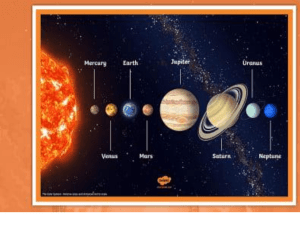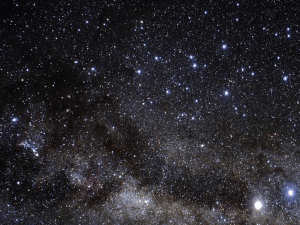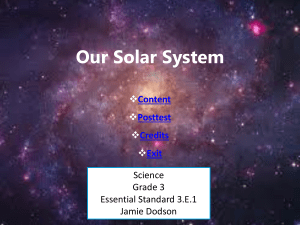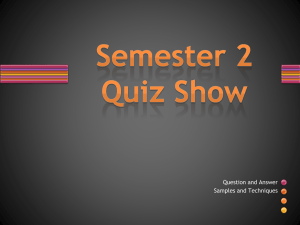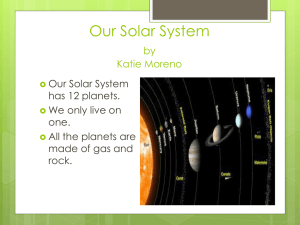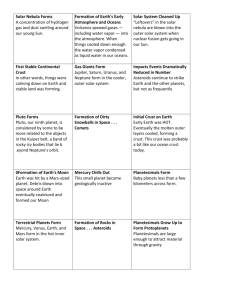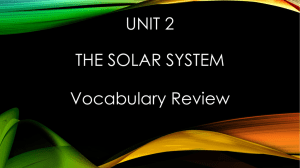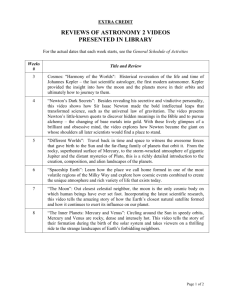96.BrainPop.SolarSystem
advertisement
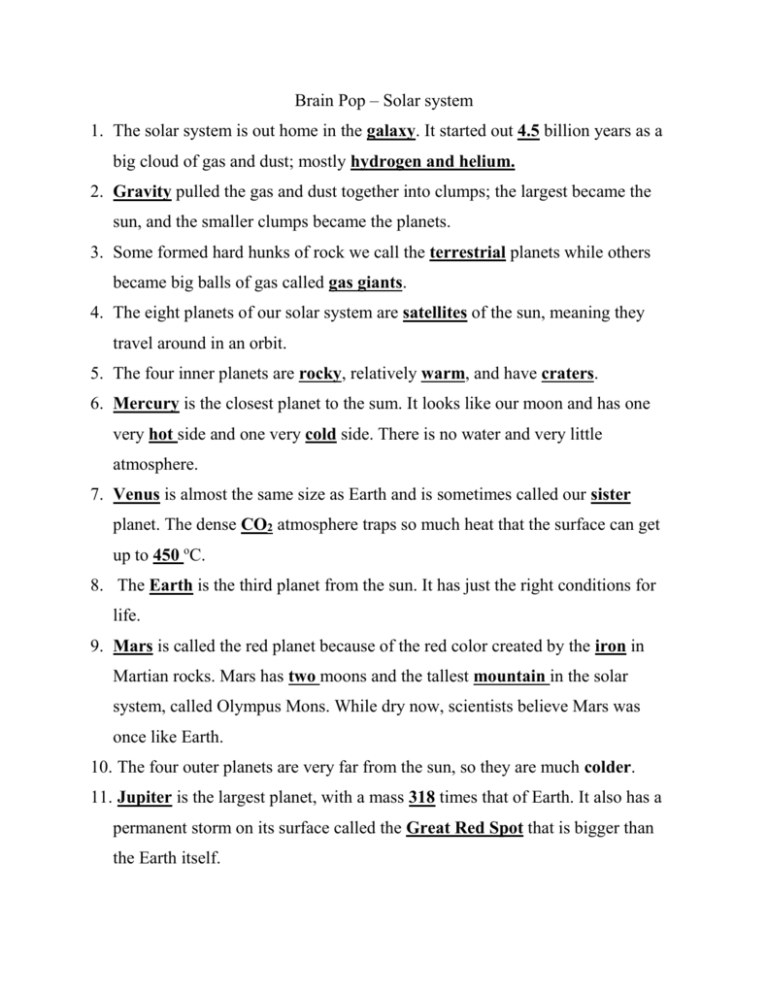
Brain Pop – Solar system 1. The solar system is out home in the galaxy. It started out 4.5 billion years as a big cloud of gas and dust; mostly hydrogen and helium. 2. Gravity pulled the gas and dust together into clumps; the largest became the sun, and the smaller clumps became the planets. 3. Some formed hard hunks of rock we call the terrestrial planets while others became big balls of gas called gas giants. 4. The eight planets of our solar system are satellites of the sun, meaning they travel around in an orbit. 5. The four inner planets are rocky, relatively warm, and have craters. 6. Mercury is the closest planet to the sum. It looks like our moon and has one very hot side and one very cold side. There is no water and very little atmosphere. 7. Venus is almost the same size as Earth and is sometimes called our sister planet. The dense CO2 atmosphere traps so much heat that the surface can get up to 450 oC. 8. The Earth is the third planet from the sun. It has just the right conditions for life. 9. Mars is called the red planet because of the red color created by the iron in Martian rocks. Mars has two moons and the tallest mountain in the solar system, called Olympus Mons. While dry now, scientists believe Mars was once like Earth. 10. The four outer planets are very far from the sun, so they are much colder. 11. Jupiter is the largest planet, with a mass 318 times that of Earth. It also has a permanent storm on its surface called the Great Red Spot that is bigger than the Earth itself. 12. Saturn is another gas giant with at least 45 moons. Saturn’s many rings are composed of millions of chunks of ice and rock. 13. Uranus is a gaseous planet with small grey rings and 25 moons. The planet’s axis is so tilted that it appears to lie on its side 14. Neptune is the last gas giant and has at least a dozen moons. It was named after the Roman god of the sea, perhaps because it is so blue. There is a stormy dark spot on Neptune, similar to Jupiter. 15. There are lots of smaller bodies in the universe. Asteroids are pieces of rock centimeters to hundreds of kilometers wide that wander the solar system. Most of them are concentrated in the asteroid belt between the inner and outer planets. 16. The dwarf planet Pluto was a main planet until demoted in 2006 is a cold rocky body smaller than our own moon. Pluto has an odd elliptical orbit that brings it closed to the sun than Neptune. Pluto also has three moons of its own; Charon, Hydra, and Nix. 17. Other dwarf planets include Ceres, the largest body in the asteroid belt, and Eris, which is slightly larger than Pluto. 18. Comets are clumps of ice and dust that orbit the sun. When they get close to the sun, some of the ice melts, forming a long wispy tail visible from Earth. 19. The Kuiper Belt and Oort Cloud are areas in the far reaches of the solar system where small bodies like comets are thought to originate.


